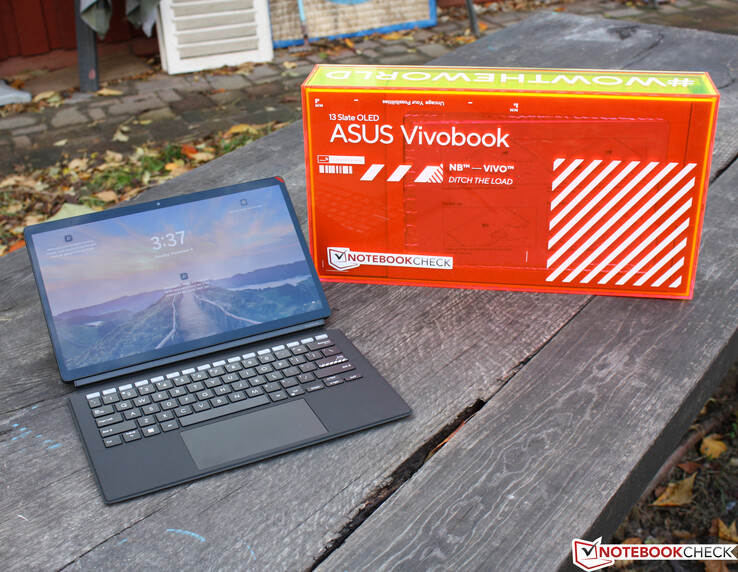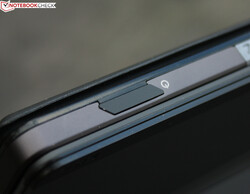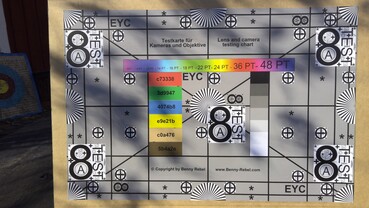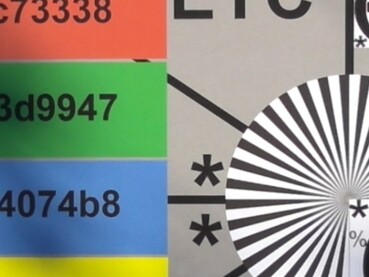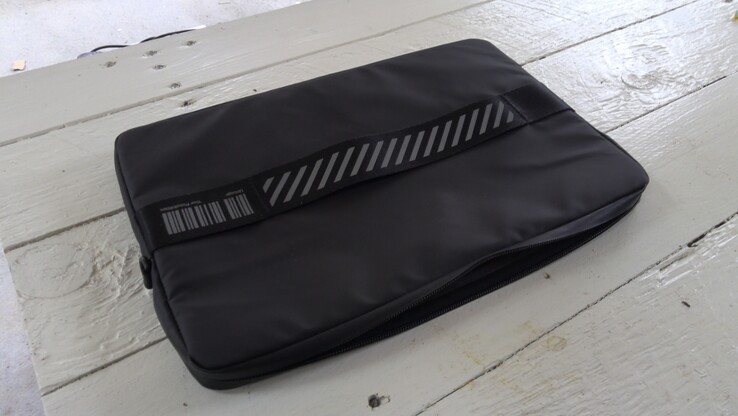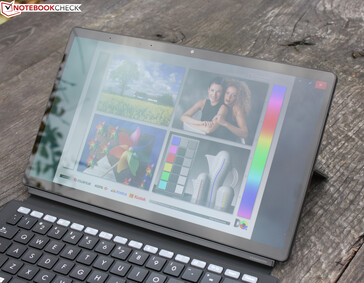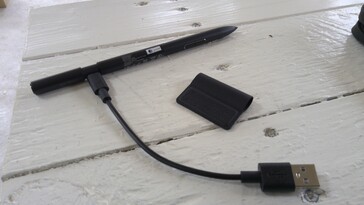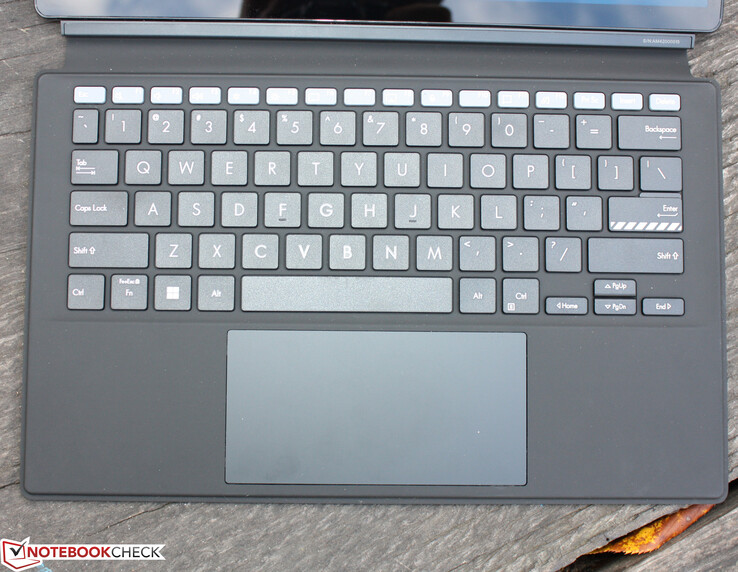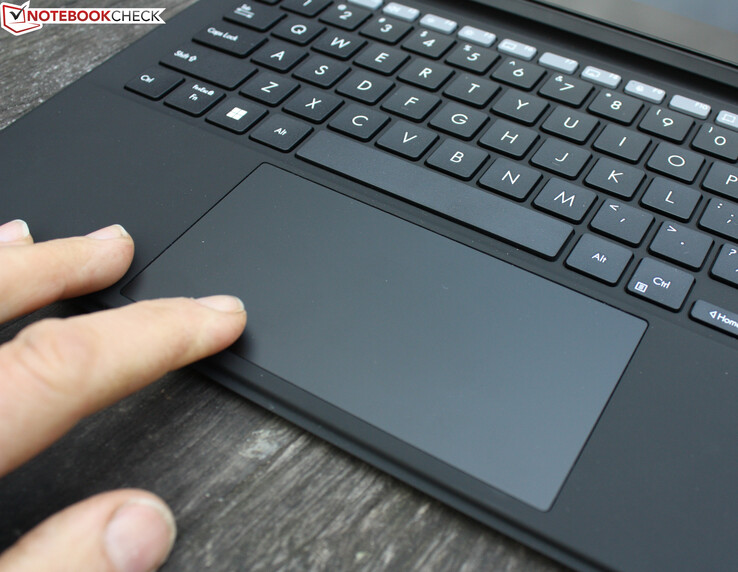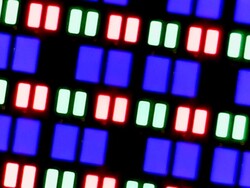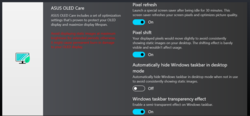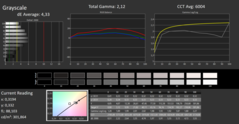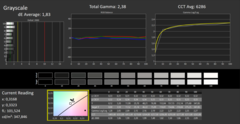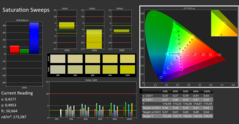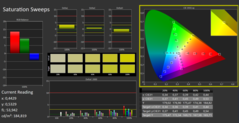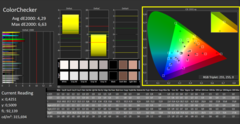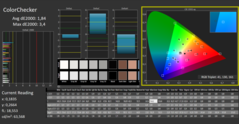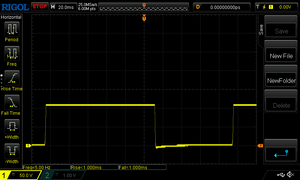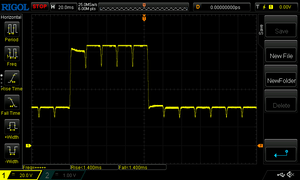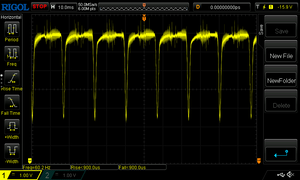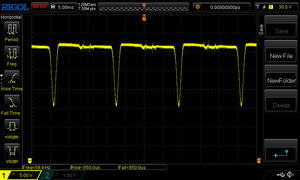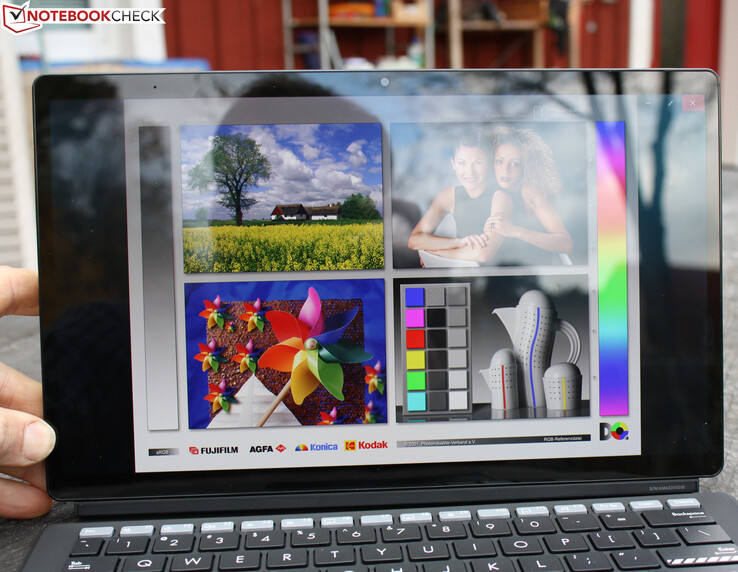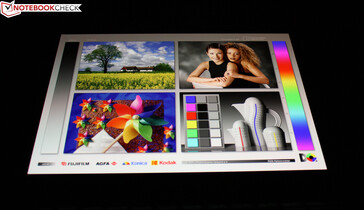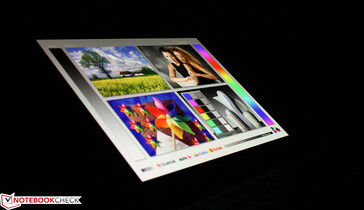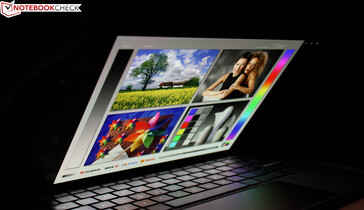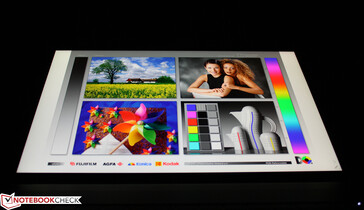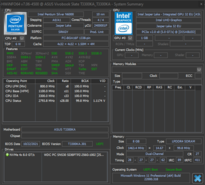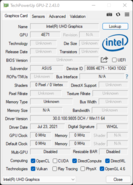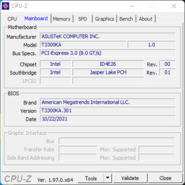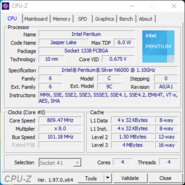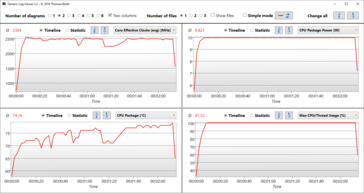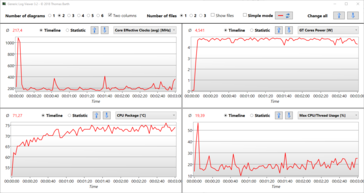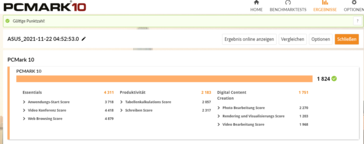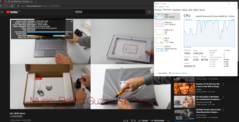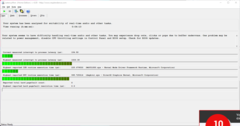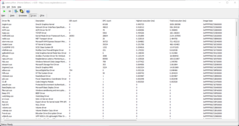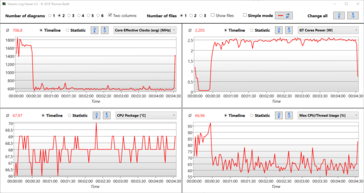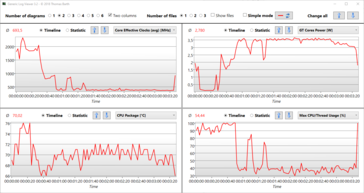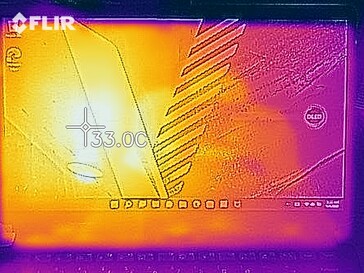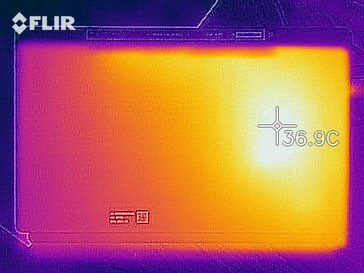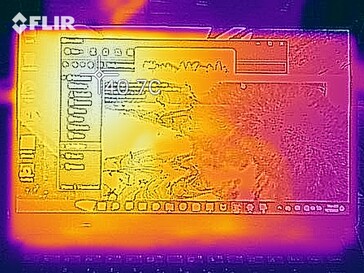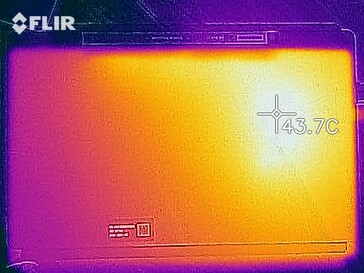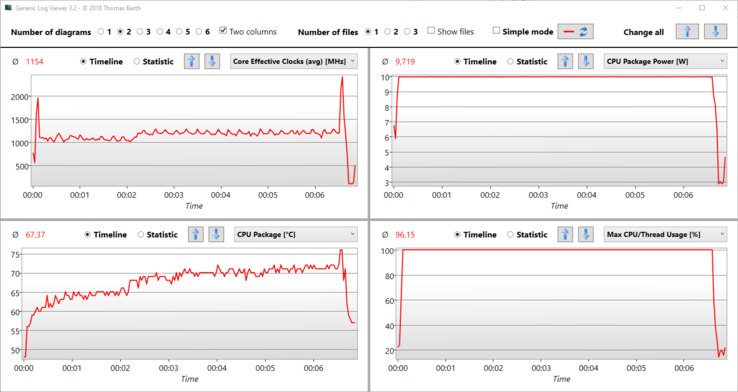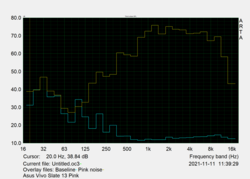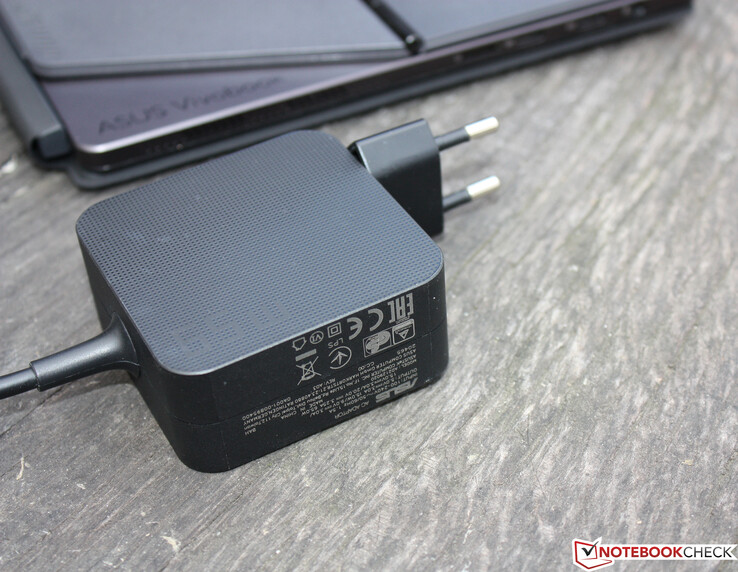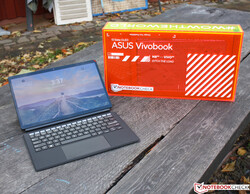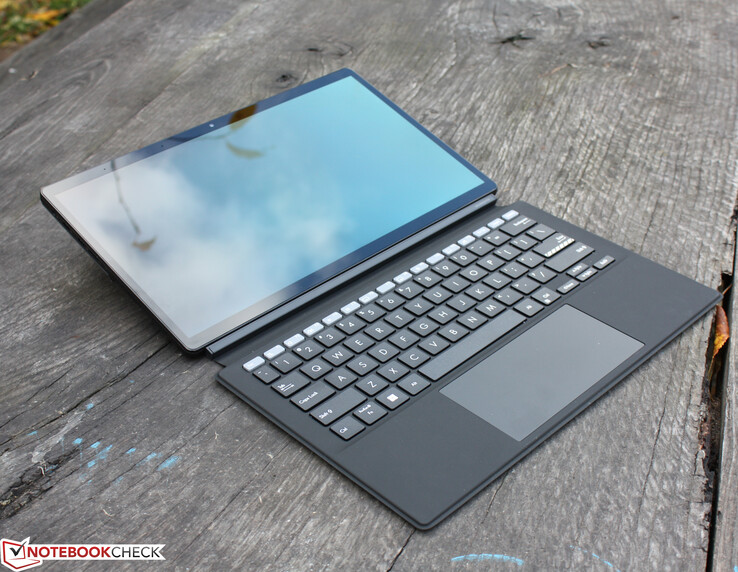Asus Vivobook 13 Slate tablet PC em revisão: OLED no seu melhor

A produtividade e o entretenimento de uma só vez é como o Asus descreve seu Vivobook 13 Slate OLED. O conteúdo de trabalho e consumo é suposto ser possível com o Vivobook 13. Para conseguir isso, ele é equipado com um processador Pentium Silver e uma tela OLED Full HD colorida e de alto contraste, incluindo uma caneta Stylus 2.0
A CPU quad-core resfriada passivamente pode acompanhar esta afirmação? Considerando toda a grande conversa da Asus, o Vivobook 13 Slate deve pelo menos ser capaz de acompanhar oMicrosoft Surface Go 2 e o Samsung Galaxy Livro S. Estes dois concorrentes são mais caros e não vêm com displays OLED, mas eles estabelecem o padrão de desempenho que um destacável com ambições de produtividade deve atender no mínimo. Pode um PentiumN6000 acompanhar o m3-8100You o Núcleo i5-L16G7?
Possible contenders in comparison
Avaliação | Data | Modelo | Peso | Altura | Size | Resolução | Preço |
|---|---|---|---|---|---|---|---|
| 86 % v7 (old) | 12/2021 | Asus Vivobook 13 Slate Pentium N6000, UHD Graphics (Jasper Lake 32 EU) | 1.4 kg | 7.9 mm | 13.30" | 1920x1080 | |
| 85.4 % v7 (old) | 12/2020 | Microsoft Surface Go 2, m3-8100Y m3-8100Y, UHD Graphics 615 | 790 g | 8.3 mm | 10.50" | 1920x1280 | |
| 88.4 % v7 (old) | 11/2019 | Microsoft Surface Pro 7 Core i5-1035G4 i5-1035G4, Iris Plus Graphics G4 (Ice Lake 48 EU) | 1.1 kg | 8.5 mm | 12.30" | 2736x1824 | |
| 84.4 % v7 (old) | 10/2019 | Microsoft Surface Pro X SQ1, Adreno 685 | 1 kg | 7.3 mm | 13.00" | 2880x1920 | |
| 85.1 % v7 (old) | 07/2020 | Samsung Galaxy Book S Intel i5-L16G7, UHD Graphics G7 (Lakefield GT2 64 EU) | 940 g | 11.8 mm | 13.30" | 1920x1080 |
Os Top 10
» Os Top 10 Portáteis Multimídia
» Os Top 10 Portáteis de Jogos
» Os Top 10 Portáteis Leves para Jogos
» Os Top 10 Portáteis Acessíveis de Escritório/Empresariais
» Os Top 10 Portáteis Premium de Escritório/Empresariais
» Os Top 10 dos Portáteis Workstation
» Os Top 10 Subportáteis
» Os Top 10 Ultrabooks
» Os Top 10 Conversíveis
» Os Top 10 Tablets
» Os Top 10 Smartphones
» A melhores Telas de Portáteis Analisadas Pela Notebookcheck
» Top 10 dos portáteis abaixo dos 500 Euros da Notebookcheck
» Top 10 dos Portáteis abaixo dos 300 Euros
Estojo - Chuteira removível
A pastilha consiste em uma estrutura de alumínio na qual o display e o hardware foram inseridos pela frente. O dispositivo tem uma resistência decente à torção, mas também não é incrivelmente robusto. Sua abertura para fins de manutenção não é possível, pelo menos não para usuários comuns. Não há peças substituíveis de qualquer forma, pois a RAM, o módulo Wi-Fi e a unidade de armazenamento estão todos a bordo.
A capa do teclado se prende magneticamente ao tablet; ele consegue se prender por si só, de modo que não é preciso estar procurando a maneira correta de fazê-lo caber. Por outro lado, o suporte se prende a um ponto precisamente definido na parte de trás, ou seja, ali onde o campo superior integra dois ímãs fortes para a direita e para a esquerda. Eles seguram a tábua com tanta firmeza que ela pode até mesmo ser levantada pelo suporte. O suporte tem uma dobradiça contínua pesada que determina o ângulo de colocação da tábua. Isto permite que a tábua fique em pé, na faixa de 110 a 170 graus. O uso na volta é possível, desde que você consiga dar ao suporte um suporte seguro. Isto é dificultado pelo corte do lado esquerdo.
O destacável pesa 1,4 quilos, o que é bastante em comparação, nenhum concorrente é tão pesado. Cada componente contribui para o peso, mas o suporte destacável (334 gramas) é o mais pesado. Por último, mas não menos importante, o sistema de refrigeração e ambos os ímãs para fixar o suporte, bem como a bateria de 50 Wh, resultam na pastilha que pesa 789 gramas por si só. As figuras na tabela sempre se referem ao peso total com teclado. A competição de 12,5 polegadas a 13 polegadas não pesa tanto. O Surface Pro X e oGalaxy Livro S pesar cerca de um quilograma a menos
Conectividade - Destacável com Wi-Fi rápido
A produtividade pára quando se trata de portos. O dispositivo Asus não tem conectividade Thunderbolt. Há duas portas Tipo C, ambas com DisplayPort. Uma delas pode estar sempre bloqueada pelo carregador, por exemplo, em casa. Isto significa que praticamente apenas um display pode ser conectado
Leitor de cartões SD
Usamos nosso cartão SD de referência (AV Pro V60) para testar a velocidade do leitor de cartões integrado. A taxa máxima de transferência é de 39 MB/s ao copiar grandes blocos de dados, enquanto 41 MB/s podem ser esperados para arquivos de imagem jpg padrão (cerca de 5 MB cada). A concorrência às vezes é duas vezes mais rápida aqui
| SD Card Reader | |
| average JPG Copy Test (av. of 3 runs) | |
| Microsoft Surface Go 2, m3-8100Y (Toshiba Exceria Pro M501 64 GB UHS-II) | |
| Microsoft Surface Pro 7 Core i5-1035G4 (Toshiba Exceria Pro M501 64 GB UHS-II) | |
| Média da turma Convertible (28.1 - 209, n=23, últimos 2 anos) | |
| Samsung Galaxy Book S Intel (Toshiba Exceria Pro M501 64 GB UHS-II) | |
| Asus Vivobook 13 Slate (AV Pro SD microSD 128 GB V60) | |
| maximum AS SSD Seq Read Test (1GB) | |
| Média da turma Convertible (28.9 - 253, n=22, últimos 2 anos) | |
| Microsoft Surface Go 2, m3-8100Y (Toshiba Exceria Pro M501 64 GB UHS-II) | |
| Microsoft Surface Pro 7 Core i5-1035G4 (Toshiba Exceria Pro M501 64 GB UHS-II) | |
| Samsung Galaxy Book S Intel (Toshiba Exceria Pro M501 64 GB UHS-II) | |
| Asus Vivobook 13 Slate | |
Comunicação
O Wi-Fi 6 está a bordo com o Intel AX201. O chip está no seu melhor aqui porque tem um desempenho acima da média para este tipo de dispositivo. O leitor de impressão digital integrado ao botão de alimentação não é muito perceptível, mas está lá. Basta colocar seu dedo sobre ele. O tablet Asus não oferece o Windows Olá com reconhecimento facial devido à falta de uma câmera IR
Webcam
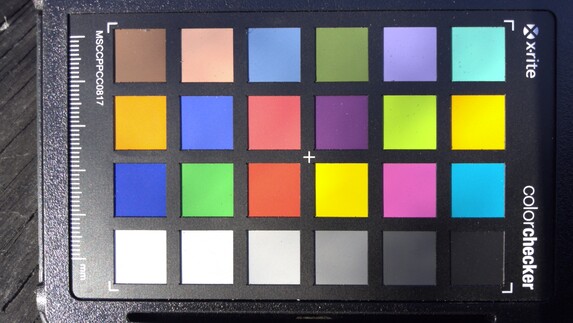
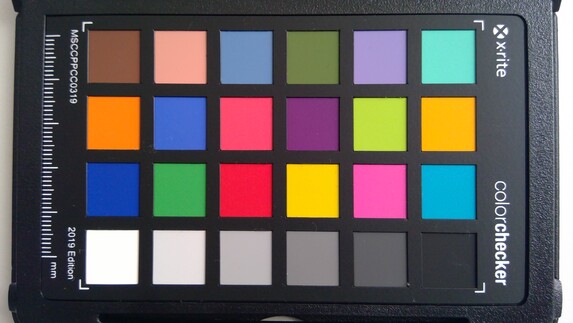
Acessórios
O Asus inclui uma caneta stylus ativa, um cabo de carregamento, um suporte magnético para a caneta e uma caixa de transporte grande para toda a pastilha na caixa. Além disso, um teclado com manga e um adaptador de alimentação de 65 watts estão incluídos. Infelizmente, o cabo de carregamento da caneta stylus tem uma porta Tipo A, portanto não pode ser carregado com o tablet, e precisa de um carregador separado ou de um laptop. O suporte magnético da caneta gruda no suporte, assim como o tablete (somente do lado direito).
Manutenção
A tábua não pode ser aberta por usuários não treinados. Devido à falta de ventiladores, não há necessidade de limpar nada de qualquer maneira
Garantia
O Vivobook 13 Slate OLED (T3300) ainda não está disponível nas lojas. A Asus normalmente oferece uma garantia de dois anos de Pickup & Return para todos os seus produtos, que pode ser estendida através de um upgrade da garantia
Dispositivos de entrada - Tudo o que você precisa em um tablet de produtividade
O suporte fixo compensa quando se usa a tela sensível ao toque. O suporte não vacila ou desliza mesmo quando os dedos estão batendo vigorosamente na tela.
O painel também pode ser operado com um estilete. Nossa amostra de revisão veio com uma caneta Bluetooth com pontas destacáveis (2H, H, HB, B), mais precisamente, uma caneta Active Stylus SA203H (4.096 níveis de pressão, taxa de amostragem de 266 Hz). A Asus irá vender o dispositivo com e sem a caneta stylus.
Teclado
As chaves são caracterizadas por um traço firme, quase rígido, e um espaçamento generoso entre elas. As chaves são completamente planas, um pouco escorregadias, e têm um curso curto (1,4 mm). Como resultado, a digitação é rápida, mas um pouco incômoda. Não há retroiluminação do teclado.
Touchpad
O enorme ClickPad excede as dimensões daqueles em muitos dispositivos de 15 polegadas ou 16 polegadas. Tem 13 cm de largura e 6,7 cm de altura. A superfície varia de lisa a escorregadia, e o ruído do clique é bastante abafado e silencioso. Assim como as teclas, o ponto fraco é o curso curto, que é ainda mais curto na metade superior. Em contrapartida, o ponto de pressão é claro, o que proporciona um feedback moderado.
Display - Cores excelentes, assim como em um smartphone
O painel FHD de 13,3 polegadas da Samsung é responsivo, moderadamente brilhante, cobre o espaço de cor P3, e suporta HDR True Black 500. Exceto pelo brilho, nossas medidas confirmam as especificações do fabricante. Medimos apenas um brilho médio de 302 cd/m², e o Asus declara 550 lêndeas. O contraste medido é de 3.000:1. Graças ao painel OLED, o sangramento da tela não é um problema.
Como é típico para OLEDs, os tempos de resposta são excelentes. O PWM é usado para reduzir o brilho neste painel OLED em níveis de 50% e abaixo, que é onde o PWM (60 Hz) entra em ação. Antes disso, o DC dimming está ativo, o qual também encontramos 60 Hz com 90% a 50% de brilho. Como o DC dimming produz uma imagem desfocada com baixo brilho, ele é desligado a 50% - o seguinte aviso aparece então na bandeja de status: "De agora em diante, sem o escurecimento DC, seus olhos podem ficar tensos, faça uma pausa"
Os trabalhadores noturnos podem ser afetados por isto; um brilho inferior a 50% pode ser desejável em situações especiais. Durante o dia, operamos a 60%-70%, portanto não enfrentamos o inconveniente de ter que trabalhar sem o escurecimento DC.
Um painel OLED precisa de um certo cuidado, um tópico que os proprietários de primeira viagem precisam aprender. Imagens estáticas, como a área de trabalho do Windows, podem entrar em combustão, um dano irreparável à tela. É por isso que existem o Pixel Refresh e o Pixel Shift. O primeiro é um protetor de tela móvel que começa após 30 minutos de inatividade.
O Pixel Shift está sempre funcionando, e desloca o conteúdo da imagem constantemente por um pixel da direita para a esquerda, o que você poderia imaginar como um tremor sutil do TFT. Como resultado, cada pixel muda de modo, mesmo quando a imagem é a mesma.
Tanto Pixel Refresh quanto Pixel Shift podem ser desativados em MyAsus / OLED Care por sua própria conta e risco. Fizemos isto para os testes de bateria, por exemplo.
| |||||||||||||||||||||||||
iluminação: 94 %
iluminação com acumulador: 303 cd/m²
Contraste: 3030:1 (Preto: 0.1 cd/m²)
ΔE ColorChecker Calman: 4.29 | ∀{0.5-29.43 Ø4.78}
calibrated: 1.84
ΔE Greyscale Calman: 4.33 | ∀{0.09-98 Ø5}
67% AdobeRGB 1998 (Argyll 3D)
97% sRGB (Argyll 3D)
65% Display P3 (Argyll 3D)
Gamma: 2.12
CCT: 6004 K
| Asus Vivobook 13 Slate Samsung SDC4169 ATNA33XC21, OLED, 1920x1080, 13.3" | Samsung Galaxy Book S Intel BOE07E7, IPS, 1920x1080, 13.3" | Microsoft Surface Go 2, m3-8100Y NV105WAM-N31, IPS, 1920x1280, 10.5" | Microsoft Surface Pro 7 Core i5-1035G4 LG Philips LP123WQ112604, IPS, 2736x1824, 12.3" | Microsoft Surface Pro X LP129WT112684, IPS, 2880x1920, 13" | |
|---|---|---|---|---|---|
| Display | 5% | 5% | -0% | ||
| Display P3 Coverage (%) | 65 | 70 8% | 68.7 6% | 66 2% | |
| sRGB Coverage (%) | 97 | 97.2 0% | 100 3% | 93.8 -3% | |
| AdobeRGB 1998 Coverage (%) | 67 | 71.3 6% | 70.1 5% | 66.9 0% | |
| Response Times | -1940% | -1400% | -1430% | -1900% | |
| Response Time Grey 50% / Grey 80% * (ms) | 2 ? | 51.2 ? -2460% | 37.2 ? -1760% | 34.8 ? -1640% | 49.6 ? -2380% |
| Response Time Black / White * (ms) | 2 ? | 30.4 ? -1420% | 22.8 ? -1040% | 26.4 ? -1220% | 30.4 ? -1420% |
| PWM Frequency (Hz) | 60 ? | 962 ? | 21550 ? | 201.6 ? | |
| Screen | -26% | 15% | -48% | -22% | |
| Brightness middle (cd/m²) | 303 | 385 27% | 404 33% | 480.4 59% | 466 54% |
| Brightness (cd/m²) | 303 | 354 17% | 402 33% | 485 60% | 470 55% |
| Brightness Distribution (%) | 94 | 88 -6% | 88 -6% | 91 -3% | 92 -2% |
| Black Level * (cd/m²) | 0.1 | 0.3 -200% | 0.28 -180% | 0.48 -380% | 0.44 -340% |
| Contrast (:1) | 3030 | 1283 -58% | 1443 -52% | 1001 -67% | 1059 -65% |
| Colorchecker dE 2000 * | 4.29 | 3.8 11% | 0.7 84% | 5 -17% | 2.1 51% |
| Colorchecker dE 2000 max. * | 6.63 | 6.4 3% | 1.2 82% | 7.72 -16% | 4 40% |
| Colorchecker dE 2000 calibrated * | 1.84 | 2.2 -20% | 0.7 62% | 2.44 -33% | |
| Greyscale dE 2000 * | 4.33 | 4.6 -6% | 1 77% | 5.9 -36% | 2.8 35% |
| Gamma | 2.12 104% | 2.2 100% | 2.15 102% | 2.38 92% | 2.05 107% |
| CCT | 6004 108% | 7424 88% | 6485 100% | 7805 83% | 6589 99% |
| Color Space (Percent of AdobeRGB 1998) (%) | 65.3 | 64.5 | 60.3 | 72.1 | |
| Color Space (Percent of sRGB) (%) | 97.2 | 99.7 | 93.2 | 96.8 | |
| Média Total (Programa/Configurações) | -654% /
-293% | -460% /
-190% | -493% /
-235% | -961% /
-397% |
* ... menor é melhor
Encontramos o DeltaE para a escala de cinza e cores 4,33 e 4,29, respectivamente, antes da calibração - aceitável, mas não perfeito. A calibração melhora os valores para 1,83 e 1,84, respectivamente. Isto os coloca abaixo de 3,0, o que é uma precisão muito boa. Nota: Tivemos que desativar o HDR e desinstalar o MyAsus incluindo o AsusSplendid para que nosso perfil de cor criado ficasse ativo. Anteriormente, ele foi impedido de ser usado pelo Splendid, a ferramenta de temperatura de cor Asus
Exibir tempos de resposta
| ↔ Tempo de resposta preto para branco | ||
|---|---|---|
| 2 ms ... ascensão ↗ e queda ↘ combinadas | ↗ 1 ms ascensão | |
| ↘ 1 ms queda | ||
| A tela mostra taxas de resposta muito rápidas em nossos testes e deve ser muito adequada para jogos em ritmo acelerado. Em comparação, todos os dispositivos testados variam de 0.1 (mínimo) a 240 (máximo) ms. » 9 % de todos os dispositivos são melhores. Isso significa que o tempo de resposta medido é melhor que a média de todos os dispositivos testados (20.2 ms). | ||
| ↔ Tempo de resposta 50% cinza a 80% cinza | ||
| 2 ms ... ascensão ↗ e queda ↘ combinadas | ↗ 1 ms ascensão | |
| ↘ 1 ms queda | ||
| A tela mostra taxas de resposta muito rápidas em nossos testes e deve ser muito adequada para jogos em ritmo acelerado. Em comparação, todos os dispositivos testados variam de 0.165 (mínimo) a 636 (máximo) ms. » 8 % de todos os dispositivos são melhores. Isso significa que o tempo de resposta medido é melhor que a média de todos os dispositivos testados (31.6 ms). | ||
Cintilação da tela / PWM (modulação por largura de pulso)
| Tela tremeluzindo/PWM detectado | 60 Hz | ≤ 90 % configuração de brilho | |
A luz de fundo da tela pisca em 60 Hz (pior caso, por exemplo, utilizando PWM) Cintilação detectada em uma configuração de brilho de 90 % e abaixo. Não deve haver cintilação ou PWM acima desta configuração de brilho. A frequência de 60 Hz é muito baixa, portanto a oscilação pode causar fadiga ocular e dores de cabeça após uso prolongado. [pwm_comparison] Em comparação: 53 % de todos os dispositivos testados não usam PWM para escurecer a tela. Se PWM foi detectado, uma média de 8118 (mínimo: 5 - máximo: 343500) Hz foi medida. | |||
Desempenho - A criação de conteúdo é possível apenas de forma limitada
OIntel Pentium Silver N6000 é baseado na arquitetura do Lago Jasper, que foi lançado no início de 2021 e tem como objetivo a economia de energia em dispositivos de baixo custo. Alguns chips podem ser resfriados passivamente, como nosso Vivobook 13 Slate. Os sistemas passivos têm usado até agora chips Core m, tais como o m3-8100YnoMicrosoft Surface Go 2ou chips muito especiais Ice Lake, tais como oi5-L16G7 com sete watts (Samsung Galaxy Livro S). Com um TDP de seis watts, o Pentium Silver é ainda mais frugal
A taxa de relógio padrão dos quatro núcleos é de 1,1 GHz, mas isto pode aumentar até 3,3 GHz em uso single-core. Isto também acontece na prática; uma referência R15 de núcleo único é realizada em 3,2 GHz, com 3,1 GHz sendo mantida ao longo do tempo.
A fim de não perder de vista o desempenho oferecido por um Intel Pentium Silver N6000 em outros dispositivos, incluímos oAcer Swift 1 SF114-34-P6U1 sub-portátil. É o único dispositivo no banco de dados com esta CPU Pentium.
Condições de teste
Executamos todos os benchmarks usando o perfil "Alto Desempenho" do Windows. Isto não faz diferença, porque no modo "Balance", Cinebench R15 e PCMark alcançam pontuações comparáveis, se não melhores. Em "Eficiência energética", os resultados são comparáveis no R15, mas o PC Mark 10 alcançou pontuações significativamente mais altas. Com isto em mente, utilizamos as melhores pontuações em cada caso para a classificação.
Processador
Em termos de desempenho, a amostra de revisão está quase no mesmo nível doMicrosoft Surface Go 2 (m3-8100Y). O Vivobook consegue tirar mais desempenho do Pentium Silver do que o Pentium Silver de 14 polegadas.Acer Swift 1 SF114-34 com um SoC idêntico, resfriado passivamente. Os processadores Core refrigerados a ar noMicrosoft Surface Pro 7 funcionam quase duas vezes mais rápido - mas também caem para até 27% sob carga contínua. O Pentium no Vivobook é mais estável com apenas -5%. O Pentium não tem praticamente nenhum pé direito para carga de curto prazo. Este é o caso de todos os concorrentes resfriados passivamente
Também analisamos o FurMark com oIntel UHD Graphics iGPU. A taxa do relógio não era legível. Os núcleos GT consomem 4,5 watts no teste de estresse da GPU. Nos jogos, isto está entre 3 e 3,5 watts.
Cinebench R15 Multi endurance test
Cinebench R23: Multi Core | Single Core
Cinebench R20: CPU (Multi Core) | CPU (Single Core)
Cinebench R15: CPU Multi 64Bit | CPU Single 64Bit
Blender: v2.79 BMW27 CPU
7-Zip 18.03: 7z b 4 | 7z b 4 -mmt1
Geekbench 5.5: Multi-Core | Single-Core
HWBOT x265 Benchmark v2.2: 4k Preset
LibreOffice : 20 Documents To PDF
R Benchmark 2.5: Overall mean
| CPU Performance rating | |
| Média da turma Convertible | |
| Microsoft Surface Pro 7 Core i5-1035G4 -6! | |
| Microsoft Surface Pro X -12! | |
| Microsoft Surface Go 2, m3-8100Y -2! | |
| Samsung Galaxy Book S Intel -2! | |
| Média Intel Pentium Silver N6000 | |
| Asus Vivobook 13 Slate | |
| Acer Swift 1 SF114-34-P6U1 | |
| Cinebench R23 / Multi Core | |
| Média da turma Convertible (2949 - 29063, n=56, últimos 2 anos) | |
| Asus Vivobook 13 Slate | |
| Média Intel Pentium Silver N6000 (1610 - 1911, n=4) | |
| Acer Swift 1 SF114-34-P6U1 | |
| Cinebench R23 / Single Core | |
| Média da turma Convertible (914 - 2163, n=56, últimos 2 anos) | |
| Asus Vivobook 13 Slate | |
| Média Intel Pentium Silver N6000 (653 - 679, n=4) | |
| Acer Swift 1 SF114-34-P6U1 | |
| Cinebench R20 / CPU (Multi Core) | |
| Média da turma Convertible (1124 - 11357, n=56, últimos 2 anos) | |
| Microsoft Surface Pro 7 Core i5-1035G4 | |
| Asus Vivobook 13 Slate | |
| Média Intel Pentium Silver N6000 (595 - 730, n=4) | |
| Acer Swift 1 SF114-34-P6U1 | |
| Samsung Galaxy Book S Intel | |
| Microsoft Surface Go 2, m3-8100Y | |
| Cinebench R20 / CPU (Single Core) | |
| Média da turma Convertible (348 - 827, n=56, últimos 2 anos) | |
| Microsoft Surface Pro 7 Core i5-1035G4 | |
| Microsoft Surface Go 2, m3-8100Y | |
| Samsung Galaxy Book S Intel | |
| Asus Vivobook 13 Slate | |
| Média Intel Pentium Silver N6000 (237 - 268, n=4) | |
| Acer Swift 1 SF114-34-P6U1 | |
| Cinebench R15 / CPU Multi 64Bit | |
| Média da turma Convertible (478 - 4830, n=59, últimos 2 anos) | |
| Microsoft Surface Pro 7 Core i5-1035G4 | |
| Asus Vivobook 13 Slate | |
| Média Intel Pentium Silver N6000 (266 - 322, n=4) | |
| Acer Swift 1 SF114-34-P6U1 | |
| Samsung Galaxy Book S Intel | |
| Microsoft Surface Go 2, m3-8100Y | |
| Cinebench R15 / CPU Single 64Bit | |
| Média da turma Convertible (149.8 - 317, n=56, últimos 2 anos) | |
| Microsoft Surface Pro 7 Core i5-1035G4 | |
| Microsoft Surface Go 2, m3-8100Y | |
| Asus Vivobook 13 Slate | |
| Média Intel Pentium Silver N6000 (109 - 121, n=4) | |
| Acer Swift 1 SF114-34-P6U1 | |
| Samsung Galaxy Book S Intel | |
| Blender / v2.79 BMW27 CPU | |
| Acer Swift 1 SF114-34-P6U1 | |
| Média Intel Pentium Silver N6000 (1738 - 3157, n=5) | |
| Samsung Galaxy Book S Intel | |
| Microsoft Surface Go 2, m3-8100Y | |
| Asus Vivobook 13 Slate | |
| Asus Vivobook 13 Slate | |
| Microsoft Surface Pro 7 Core i5-1035G4 | |
| Média da turma Convertible (107 - 1051, n=55, últimos 2 anos) | |
| 7-Zip 18.03 / 7z b 4 | |
| Média da turma Convertible (12977 - 121368, n=56, últimos 2 anos) | |
| Microsoft Surface Pro 7 Core i5-1035G4 | |
| Asus Vivobook 13 Slate | |
| Asus Vivobook 13 Slate | |
| Média Intel Pentium Silver N6000 (8096 - 9668, n=5) | |
| Acer Swift 1 SF114-34-P6U1 | |
| Microsoft Surface Go 2, m3-8100Y | |
| Samsung Galaxy Book S Intel | |
| 7-Zip 18.03 / 7z b 4 -mmt1 | |
| Média da turma Convertible (3672 - 6540, n=56, últimos 2 anos) | |
| Acer Swift 1 SF114-34-P6U1 | |
| Microsoft Surface Go 2, m3-8100Y | |
| Samsung Galaxy Book S Intel | |
| Média Intel Pentium Silver N6000 (2320 - 3387, n=5) | |
| Asus Vivobook 13 Slate | |
| Asus Vivobook 13 Slate | |
| Microsoft Surface Pro 7 Core i5-1035G4 | |
| Geekbench 5.5 / Multi-Core | |
| Média da turma Convertible (2188 - 22023, n=55, últimos 2 anos) | |
| Microsoft Surface Pro X | |
| Acer Swift 1 SF114-34-P6U1 | |
| Média Intel Pentium Silver N6000 (1784 - 2004, n=5) | |
| Asus Vivobook 13 Slate | |
| Microsoft Surface Go 2, m3-8100Y | |
| Samsung Galaxy Book S Intel | |
| Geekbench 5.5 / Single-Core | |
| Média da turma Convertible (806 - 2275, n=55, últimos 2 anos) | |
| Microsoft Surface Go 2, m3-8100Y | |
| Samsung Galaxy Book S Intel | |
| Microsoft Surface Pro X | |
| Acer Swift 1 SF114-34-P6U1 | |
| Média Intel Pentium Silver N6000 (720 - 736, n=5) | |
| Asus Vivobook 13 Slate | |
| HWBOT x265 Benchmark v2.2 / 4k Preset | |
| Média da turma Convertible (3.43 - 36.2, n=56, últimos 2 anos) | |
| Microsoft Surface Pro 7 Core i5-1035G4 | |
| Microsoft Surface Go 2, m3-8100Y | |
| Asus Vivobook 13 Slate | |
| Asus Vivobook 13 Slate | |
| Média Intel Pentium Silver N6000 (1.55 - 1.76, n=5) | |
| Acer Swift 1 SF114-34-P6U1 | |
| Samsung Galaxy Book S Intel | |
| LibreOffice / 20 Documents To PDF | |
| Asus Vivobook 13 Slate | |
| Asus Vivobook 13 Slate | |
| Média Intel Pentium Silver N6000 (84.5 - 128, n=5) | |
| Acer Swift 1 SF114-34-P6U1 | |
| Samsung Galaxy Book S Intel | |
| Microsoft Surface Go 2, m3-8100Y | |
| Média da turma Convertible (42.5 - 84.3, n=55, últimos 2 anos) | |
| R Benchmark 2.5 / Overall mean | |
| Asus Vivobook 13 Slate | |
| Asus Vivobook 13 Slate | |
| Média Intel Pentium Silver N6000 (1.084 - 1.278, n=5) | |
| Acer Swift 1 SF114-34-P6U1 | |
| Samsung Galaxy Book S Intel | |
| Microsoft Surface Go 2, m3-8100Y | |
| Média da turma Convertible (0.3985 - 0.84, n=55, últimos 2 anos) | |
* ... menor é melhor
AIDA64: FP32 Ray-Trace | FPU Julia | CPU SHA3 | CPU Queen | FPU SinJulia | FPU Mandel | CPU AES | CPU ZLib | FP64 Ray-Trace | CPU PhotoWorxx
| Performance rating | |
| Média da turma Convertible | |
| Microsoft Surface Go 2, m3-8100Y | |
| Asus Vivobook 13 Slate | |
| Média Intel Pentium Silver N6000 | |
| Acer Swift 1 SF114-34-P6U1 | |
| Samsung Galaxy Book S Intel | |
| AIDA64 / FP32 Ray-Trace | |
| Média da turma Convertible (1480 - 64158, n=55, últimos 2 anos) | |
| Microsoft Surface Go 2, m3-8100Y | |
| Asus Vivobook 13 Slate | |
| Média Intel Pentium Silver N6000 (940 - 1085, n=4) | |
| Acer Swift 1 SF114-34-P6U1 | |
| Samsung Galaxy Book S Intel | |
| AIDA64 / FPU Julia | |
| Média da turma Convertible (11392 - 183760, n=55, últimos 2 anos) | |
| Microsoft Surface Go 2, m3-8100Y | |
| Asus Vivobook 13 Slate | |
| Média Intel Pentium Silver N6000 (5420 - 6418, n=4) | |
| Acer Swift 1 SF114-34-P6U1 | |
| Samsung Galaxy Book S Intel | |
| AIDA64 / CPU SHA3 | |
| Média da turma Convertible (797 - 8151, n=55, últimos 2 anos) | |
| Microsoft Surface Go 2, m3-8100Y | |
| Asus Vivobook 13 Slate | |
| Média Intel Pentium Silver N6000 (397 - 467, n=4) | |
| Acer Swift 1 SF114-34-P6U1 | |
| Samsung Galaxy Book S Intel | |
| AIDA64 / CPU Queen | |
| Média da turma Convertible (14686 - 145339, n=55, últimos 2 anos) | |
| Acer Swift 1 SF114-34-P6U1 | |
| Média Intel Pentium Silver N6000 (19506 - 24270, n=4) | |
| Asus Vivobook 13 Slate | |
| Microsoft Surface Go 2, m3-8100Y | |
| Samsung Galaxy Book S Intel | |
| AIDA64 / FPU SinJulia | |
| Média da turma Convertible (1120 - 29155, n=55, últimos 2 anos) | |
| Microsoft Surface Go 2, m3-8100Y | |
| Samsung Galaxy Book S Intel | |
| Asus Vivobook 13 Slate | |
| Média Intel Pentium Silver N6000 (934 - 1090, n=4) | |
| Acer Swift 1 SF114-34-P6U1 | |
| AIDA64 / FPU Mandel | |
| Média da turma Convertible (4929 - 97193, n=55, últimos 2 anos) | |
| Microsoft Surface Go 2, m3-8100Y | |
| Asus Vivobook 13 Slate | |
| Média Intel Pentium Silver N6000 (2811 - 3343, n=4) | |
| Acer Swift 1 SF114-34-P6U1 | |
| Samsung Galaxy Book S Intel | |
| AIDA64 / CPU AES | |
| Média da turma Convertible (15752 - 139734, n=55, últimos 2 anos) | |
| Asus Vivobook 13 Slate | |
| Média Intel Pentium Silver N6000 (14460 - 16999, n=4) | |
| Acer Swift 1 SF114-34-P6U1 | |
| Samsung Galaxy Book S Intel | |
| Microsoft Surface Go 2, m3-8100Y | |
| AIDA64 / CPU ZLib | |
| Média da turma Convertible (218 - 2001, n=55, últimos 2 anos) | |
| Asus Vivobook 13 Slate | |
| Média Intel Pentium Silver N6000 (140 - 166, n=4) | |
| Acer Swift 1 SF114-34-P6U1 | |
| Samsung Galaxy Book S Intel | |
| Microsoft Surface Go 2, m3-8100Y | |
| AIDA64 / FP64 Ray-Trace | |
| Média da turma Convertible (1169 - 34297, n=55, últimos 2 anos) | |
| Microsoft Surface Go 2, m3-8100Y | |
| Asus Vivobook 13 Slate | |
| Média Intel Pentium Silver N6000 (523 - 603, n=4) | |
| Acer Swift 1 SF114-34-P6U1 | |
| Samsung Galaxy Book S Intel | |
| AIDA64 / CPU PhotoWorxx | |
| Média da turma Convertible (14193 - 81626, n=55, últimos 2 anos) | |
| Microsoft Surface Go 2, m3-8100Y | |
| Asus Vivobook 13 Slate | |
| Samsung Galaxy Book S Intel | |
| Média Intel Pentium Silver N6000 (6647 - 10571, n=4) | |
| Acer Swift 1 SF114-34-P6U1 | |
Desempenho do sistema
O desempenho de aplicação da pontuação PCMark certamente não indica um desempenho excepcional, mas um desempenho adequado. Isto certamente também está relacionado à escolha da SSD; é uma PCIe Gen 3.0 x4, e não uma unidade de armazenamento flash soldada. Embora o dispositivo Asus tenha que admitir a derrota para a Superfície Pro 7pode acompanhar ou até superar o desempenho do Superfície 2. Vale a pena notar: A SamsungGalaxy Livro S está muito atrasado nestes testes, o que já foi sugerido pelos benchmarks de CPU acima.
Em relação aos criadores de conteúdo: As notas do Vivobook estão acima da média na criação de conteúdo. No entanto, os Superfície Pro 7 é 50% melhor nesta área.
| PCMark 10 / Score | |
| Média da turma Convertible (3229 - 9125, n=53, últimos 2 anos) | |
| Microsoft Surface Pro 7 Core i5-1035G4 | |
| Microsoft Surface Go 2, m3-8100Y | |
| Asus Vivobook 13 Slate | |
| Média Intel Pentium Silver N6000, Intel UHD Graphics (Jasper Lake 32 EU) (2467 - 2823, n=3) | |
| Acer Swift 1 SF114-34-P6U1 | |
| Samsung Galaxy Book S Intel | |
| PCMark 10 / Essentials | |
| Média da turma Convertible (7233 - 12222, n=53, últimos 2 anos) | |
| Microsoft Surface Pro 7 Core i5-1035G4 | |
| Microsoft Surface Go 2, m3-8100Y | |
| Asus Vivobook 13 Slate | |
| Média Intel Pentium Silver N6000, Intel UHD Graphics (Jasper Lake 32 EU) (5705 - 6729, n=3) | |
| Acer Swift 1 SF114-34-P6U1 | |
| Samsung Galaxy Book S Intel | |
| PCMark 10 / Productivity | |
| Média da turma Convertible (5062 - 10643, n=53, últimos 2 anos) | |
| Microsoft Surface Pro 7 Core i5-1035G4 | |
| Microsoft Surface Go 2, m3-8100Y | |
| Asus Vivobook 13 Slate | |
| Média Intel Pentium Silver N6000, Intel UHD Graphics (Jasper Lake 32 EU) (3706 - 3955, n=3) | |
| Acer Swift 1 SF114-34-P6U1 | |
| Samsung Galaxy Book S Intel | |
| PCMark 10 / Digital Content Creation | |
| Média da turma Convertible (2496 - 16551, n=53, últimos 2 anos) | |
| Microsoft Surface Pro 7 Core i5-1035G4 | |
| Asus Vivobook 13 Slate | |
| Média Intel Pentium Silver N6000, Intel UHD Graphics (Jasper Lake 32 EU) (1912 - 2295, n=3) | |
| Acer Swift 1 SF114-34-P6U1 | |
| Microsoft Surface Go 2, m3-8100Y | |
| Samsung Galaxy Book S Intel | |
| PCMark 10 Score | 2823 pontos | |
Ajuda | ||
| AIDA64 / Memory Copy | |
| Média da turma Convertible (23880 - 158525, n=55, últimos 2 anos) | |
| Microsoft Surface Go 2, m3-8100Y | |
| Asus Vivobook 13 Slate | |
| Média Intel Pentium Silver N6000 (15623 - 26405, n=4) | |
| AIDA64 / Memory Read | |
| Média da turma Convertible (19931 - 126725, n=55, últimos 2 anos) | |
| Microsoft Surface Go 2, m3-8100Y | |
| Asus Vivobook 13 Slate | |
| Média Intel Pentium Silver N6000 (15719 - 17883, n=4) | |
| AIDA64 / Memory Write | |
| Média da turma Convertible (17473 - 216896, n=55, últimos 2 anos) | |
| Asus Vivobook 13 Slate | |
| Microsoft Surface Go 2, m3-8100Y | |
| Média Intel Pentium Silver N6000 (17170 - 34661, n=4) | |
| AIDA64 / Memory Latency | |
| Média da turma Convertible (6.9 - 536, n=54, últimos 2 anos) | |
| Microsoft Surface Go 2, m3-8100Y | |
| Asus Vivobook 13 Slate | |
| Média Intel Pentium Silver N6000 (57.8 - 71.4, n=4) | |
| Samsung Galaxy Book S Intel | |
* ... menor é melhor
Latências DPC
Em nosso teste de latência padronizado (navegação web, reprodução 4K no YouTube, carga de CPU), o Vivobook mostra problemas com latências elevadas. Isto é devido aos drivers DirectX, rede e ACPI. Consequentemente, esta configuração de driver não é adequada para aplicações de áudio em tempo real. Havia 95 frames pulados (dropped frames) na reprodução do vídeo 4K
| DPC Latencies / LatencyMon - interrupt to process latency (max), Web, Youtube, Prime95 | |
| Microsoft Surface Go 2, m3-8100Y | |
| Samsung Galaxy Book S Intel | |
| Asus Vivobook 13 Slate | |
* ... menor é melhor
Armazenamento
O WDC PCIe 3.0 SSD (NVMe M.2) tem uma capacidade total de 256 GB. Está instalado no modelo padrão e, segundo a Asus, não está a bordo, o que significa que teoricamente pode ser substituído. A versão de entrada tem um drive eMMC de 128 GB.
O WDC SN530 é bastante baixo nos padrões de referência da unidade e é normalmente superado pelos SSDs Toshiba em ambos os modelos de superfície nos subscritores. Embora o tempo de acesso lido seja muito bom, o WDC é inferior quando lê e escreve grandes e pequenos blocos de dados.
* ... menor é melhor
Continuous load read: DiskSpd Read Loop, Queue Depth 8
Placa gráfica
A Intel UHD Graphics iGPU (32 EUs, 350 - 850 MHz) auxilia com Quick Sync (renderização de vídeo) e com a reprodução de vídeos de alta resolução. Os jogos não são nada para escrever em casa, exceto aqueles da Windows Store. Os blockbusters recentes ou até mesmo os mais antigos, alguns dos quais testamos, são muito propensos a falhar a marca, como mostra a tabela de jogos muito vermelha. Uma jogabilidade suave geralmente não é sequer possível usando as configurações mais baixas
| 3DMark 11 Performance | 1963 pontos | |
| 3DMark Fire Strike Score | 1245 pontos | |
| 3DMark Time Spy Score | 432 pontos | |
Ajuda | ||
Desempenho do jogo
Testamos como a pastilha resfriada passivamente lida com a carga contínua no SoC com o The Witcher 3. O chip aquece até entre 68 °C (~154 °F) e 70 °C (~158 °F), com a seção do processador funcionando a 450 ou 600 MHz (1.100 MHz seria a velocidade normal do relógio). Isto significa que está ocorrendo um estrangulamento maciço. A velocidade do relógio GPU não era legível, mas também podemos identificar uma redução no desempenho com base no consumo de energia dos núcleos GT (2,5 e 3,5 watts, respectivamente). Como um teste de estresse dedicado da GPU, o FurMark funciona a 4,5 watts
| GTA V - 1024x768 Lowest Settings possible | |
| Média da turma Convertible (50.6 - 172, n=42, últimos 2 anos) | |
| Asus Vivobook 13 Slate | |
| Média Intel UHD Graphics (Jasper Lake 32 EU) (6.57 - 26.8, n=6) | |
| Acer Swift 1 SF114-34-P6U1 | |
| Far Cry 5 - 1280x720 Low Preset AA:T | |
| Média da turma Convertible (15 - 107, n=35, últimos 2 anos) | |
| Microsoft Surface Go 2, m3-8100Y | |
| Acer Swift 1 SF114-34-P6U1 | |
| Média Intel UHD Graphics (Jasper Lake 32 EU) (n=1) | |
| New World - 1280x720 Low Video Quality | |
| Asus Vivobook 13 Slate | |
| Média Intel UHD Graphics (Jasper Lake 32 EU) (n=1) | |
| baixo | média | alto | ultra | |
|---|---|---|---|---|
| GTA V (2015) | 26 | 12 | ||
| The Witcher 3 (2015) | 20.1 | 10 | ||
| Dota 2 Reborn (2015) | 50.1 | 26.9 | 14.9 | 13.8 |
| X-Plane 11.11 (2018) | 20 | 12.4 | 12.5 | |
| Far Cry 5 (2018) | ||||
| New World (2021) | 17 |
Emissões - Asus comprimido sem ventilador
Emissões sonoras
Não há emissão de ruído, já que a tábua não tem ventilador.
Barulho
| Ocioso |
| 26.3 / 26.3 / 26.3 dB |
| Carga |
| 26.3 / 26.3 dB |
 | ||
30 dB silencioso 40 dB(A) audível 50 dB(A) ruidosamente alto |
||
min: | ||
Temperatura
O dispositivo de teste se comporta normalmente quando se trata de temperatura. Atinge um máximo de 33 °C (~91 °F) em uso inativo, e apenas 30 °C (~86 °F) em média. Ele se aquece ao toque sob carga: 36 °C (~97 °F) em média, 41 °C (~106 °F) em certos pontos. Isto significa que o Vivobook pode sempre ser usado nas mãos ou na volta. Os rivais mais poderosos com ventiladores são ainda mais quentes sob carga e ao mesmo tempo em uso ocioso - o ventilador noSuperfície Pro 7 só se liga sob carga.
(±) A temperatura máxima no lado superior é 41.4 °C / 107 F, em comparação com a média de 35.4 °C / 96 F , variando de 19.6 a 60 °C para a classe Convertible.
(±) A parte inferior aquece até um máximo de 40.8 °C / 105 F, em comparação com a média de 36.8 °C / 98 F
(+) Em uso inativo, a temperatura média para o lado superior é 30.3 °C / 87 F, em comparação com a média do dispositivo de 30.3 °C / ### class_avg_f### F.
(±) Os apoios para as mãos e o touchpad podem ficar muito quentes ao toque, com um máximo de 36.9 °C / 98.4 F.
(-) A temperatura média da área do apoio para as mãos de dispositivos semelhantes foi 27.9 °C / 82.2 F (-9 °C / -16.2 F).
| Asus Vivobook 13 Slate Intel Pentium Silver N6000, Intel UHD Graphics (Jasper Lake 32 EU) | Samsung Galaxy Book S Intel Intel Core i5-L16G7, Intel UHD Graphics G7 (Lakefield GT2 64 EU) | Microsoft Surface Go 2, m3-8100Y Intel Core m3-8100Y, Intel UHD Graphics 615 | Microsoft Surface Pro 7 Core i5-1035G4 Intel Core i5-1035G4, Intel Iris Plus Graphics G4 (Ice Lake 48 EU) | Microsoft Surface Pro X Microsoft SQ1, Qualcomm Adreno 685 | |
|---|---|---|---|---|---|
| Heat | 16% | 10% | -4% | 8% | |
| Maximum Upper Side * (°C) | 41.4 | 38.1 8% | 45.4 -10% | 43.6 -5% | 41.8 -1% |
| Maximum Bottom * (°C) | 40.8 | 40 2% | 42.6 -4% | 47.8 -17% | 45.7 -12% |
| Idle Upper Side * (°C) | 32.9 | 24.8 25% | 24.9 24% | 32 3% | 26.3 20% |
| Idle Bottom * (°C) | 34.1 | 24.8 27% | 23.8 30% | 32.4 5% | 25.8 24% |
* ... menor é melhor
Teste de estresse
Como o SoC reage sob carga prolongada? Prime95 e FurMark são processados pela CPU e pelo iGPU ao mesmo tempo, o que faz com que a velocidade do relógio caia entre 1,0 e 1,2 GHz muito rapidamente. Esta taxa é mantida enquanto o calor residual se fixa a 70 °C (~158 °F). É bastante notável que este desenvolvimento de calor se traduz apenas em 41 °C (~106 °F) na superfície
Oradores
Asus fala de um sistema quad-falante com um amplificador inteligente. Isto é suposto fornecer um volume maior com menos distorções e som surround. Uma "experiência sonora bombástica", como diz Asus?
Bem, comparado ao que outras placas do mesmo tamanho oferecem - e o que os laptops padrão oferecem - o sistema de quatro alto-falantes é bastante impressionante. É alto, não distorce no volume máximo, e as médias e altas parecem equilibradas. O baixo não está presente, mas a fala soa clara e acentuada. Testamos o cancelamento do ruído AI dos alto-falantes com música e fala e não notamos nenhum efeito, nem mesmo com fones de ouvido conectados à porta combinada.
O cancelamento do ruído do microfone (MyAsus: AI Noise Canceling) funciona perfeitamente: A gravação de voz é limpa, independentemente de estarmos falando na frente do dispositivo, a dois metros de distância, ou olhando pela janela. Esta é uma solução muito boa para videoconferências.
Asus Vivobook 13 Slate análise de áudio
(±) | o volume do alto-falante é médio, mas bom (###valor### dB)
Graves 100 - 315Hz
(-) | quase nenhum baixo - em média 25.2% menor que a mediana
(±) | a linearidade dos graves é média (8.1% delta para a frequência anterior)
Médios 400 - 2.000 Hz
(±) | médios mais altos - em média 6.3% maior que a mediana
(±) | a linearidade dos médios é média (9.4% delta para frequência anterior)
Altos 2 - 16 kHz
(+) | agudos equilibrados - apenas 4% longe da mediana
(+) | os máximos são lineares (3.3% delta da frequência anterior)
Geral 100 - 16.000 Hz
(±) | a linearidade do som geral é média (21.6% diferença em relação à mediana)
Comparado com a mesma classe
» 59% de todos os dispositivos testados nesta classe foram melhores, 10% semelhantes, 31% piores
» O melhor teve um delta de 6%, a média foi 20%, o pior foi 57%
Comparado com todos os dispositivos testados
» 60% de todos os dispositivos testados foram melhores, 7% semelhantes, 33% piores
» O melhor teve um delta de 4%, a média foi 24%, o pior foi 134%
Microsoft Surface Pro 7 Core i5-1035G4 análise de áudio
(±) | o volume do alto-falante é médio, mas bom (###valor### dB)
Graves 100 - 315Hz
(±) | graves reduzidos - em média 10.6% menor que a mediana
(±) | a linearidade dos graves é média (11.3% delta para a frequência anterior)
Médios 400 - 2.000 Hz
(+) | médios equilibrados - apenas 4.8% longe da mediana
(+) | médios são lineares (4.1% delta para frequência anterior)
Altos 2 - 16 kHz
(±) | máximos mais altos - em média 5.4% maior que a mediana
(±) | a linearidade dos máximos é média (7.9% delta para frequência anterior)
Geral 100 - 16.000 Hz
(±) | a linearidade do som geral é média (24.9% diferença em relação à mediana)
Comparado com a mesma classe
» 75% de todos os dispositivos testados nesta classe foram melhores, 7% semelhantes, 18% piores
» O melhor teve um delta de 6%, a média foi 20%, o pior foi 57%
Comparado com todos os dispositivos testados
» 75% de todos os dispositivos testados foram melhores, 5% semelhantes, 19% piores
» O melhor teve um delta de 4%, a média foi 24%, o pior foi 134%
Gestão de energia - conveniência OLED em detrimento do consumo de energia
Consumo de energia
Como esperado, o consumo de energia do sistema é baixo, o que é garantido pelo Pentium de 7 watts. No entanto, um visor OLED geralmente aumenta as taxas de consumo, algo que também observamos em comparação com a concorrência. OGalaxy Livro S está satisfeito com 2,5 a 6 watts em uso ocioso, enquanto nosso Vivobook usa de 4,2 a 8,2 watts. Quando o protetor de tela OLED está ativo, o consumo de energia aumenta em 15% neste instantâneo. No final, o Vivobook não é tão frugal quanto o resto do hardware poderia ser devido à tela. Sob carga, vemos a limitada capacidade de desempenho refletida no consumo de energia: Os níveis médios e máximos de energia estão próximos um do outro, que é onde o estrangulamento significativo no teste de estresse se faz sentir. A competição resfriada a ar sob a forma deSuperfície Pro 7 naturalmente supera o Vivobook aqui porque o Intel Core é consideravelmente mais potente, o que é mais ou menos a compensação para o alto consumo de energia. Uma comparação interessante dentro da série Pentium Silver é ilustrada pelo consumo de energia durante o nosso teste Witcher 3e o teste de estresse: Enquanto que nosso destacável de 13 polegadas consome energia a um ritmo constante e, portanto, também fornece um desempenho constante, o Acer Swift atinge um pico impressionante, mas depois reverte para um nível mais baixo. Isto confirma o que vimos acima com o processador: Nosso Vivobook tem mais potência de computação do que o laptop Aspire sob carga contínua
| desligado | |
| Ocioso | |
| Carga |
|
Key:
min: | |
| Asus Vivobook 13 Slate Pentium N6000, UHD Graphics (Jasper Lake 32 EU), WDC PC SN530 SDBPMPZ-265G, OLED, 1920x1080, 13.3" | Samsung Galaxy Book S Intel i5-L16G7, UHD Graphics G7 (Lakefield GT2 64 EU), 256 GB UFS 3.0 Flash, IPS, 1920x1080, 13.3" | Microsoft Surface Pro 7 Core i5-1035G4 i5-1035G4, Iris Plus Graphics G4 (Ice Lake 48 EU), Toshiba BG4 KBG40ZPZ256G, IPS, 2736x1824, 12.3" | Microsoft Surface Pro X SQ1, Adreno 685, 256 GB NVMe, IPS, 2880x1920, 13" | Média Intel UHD Graphics (Jasper Lake 32 EU) | Média da turma Convertible | |
|---|---|---|---|---|---|---|
| Power Consumption | 17% | -98% | -19% | -15% | -100% | |
| Idle Minimum * (Watt) | 4.2 | 2.5 40% | 4.5 -7% | 3.2 24% | 4.83 ? -15% | 4.43 ? -5% |
| Idle Average * (Watt) | 6.1 | 4.8 21% | 9.2 -51% | 8.5 -39% | 7.13 ? -17% | 7.38 ? -21% |
| Idle Maximum * (Watt) | 8.2 | 6 27% | 9.6 -17% | 9.6 -17% | 7.88 ? 4% | 9.78 ? -19% |
| Load Average * (Watt) | 16.4 | 14.9 9% | 42 -156% | 19.8 -21% | 17.5 ? -7% | 45 ? -174% |
| Load Maximum * (Watt) | 17.7 | 20.1 -14% | 63.5 -259% | 24.7 -40% | 24.9 ? -41% | 67.1 ? -279% |
* ... menor é melhor
Energy consumption during The Witcher 3 / stress test
Duração da bateria
A bateria de lítio-íon de 3 células é o maior modelo no campo de teste com 50 Wh. No entanto, o tempo de funcionamento Wi-Fi de 7:30 horas está consideravelmente atrás do Superfície Pro 7e oGalaxy Livro S. O maior consumo de energia do OLED é evidente aqui.
O baixo desempenho também se reflete em um alto tempo de execução de carga. Executamos o Battery Eater Eater Classic com o máximo de brilho com o OLED Care desativado. 4:54 horas sob carga é incomum, mas é de pouca utilidade porque as tarefas também levam mais tempo devido à menor potência computacional.
O máximo é de 15 horas; isto é no brilho mais baixo, sem OLED Care, sem módulos sem fio e, claro, em modo inativo (Leitor de Comedor de Bateria). OSuperfície Pro 7 dura umas impressionantes 22 horas - com apenas uma bateria de 45 Wh.
| Asus Vivobook 13 Slate Pentium N6000, UHD Graphics (Jasper Lake 32 EU), 50 Wh | Samsung Galaxy Book S Intel i5-L16G7, UHD Graphics G7 (Lakefield GT2 64 EU), 42 Wh | Microsoft Surface Go 2, m3-8100Y m3-8100Y, UHD Graphics 615, 27 Wh | Microsoft Surface Pro 7 Core i5-1035G4 i5-1035G4, Iris Plus Graphics G4 (Ice Lake 48 EU), 45 Wh | Microsoft Surface Pro X SQ1, Adreno 685, 38.2 Wh | Média da turma Convertible | |
|---|---|---|---|---|---|---|
| Duração da bateria | 6% | -35% | 6% | 4% | 17% | |
| Reader / Idle (h) | 15.2 | 22.3 47% | 25.1 ? 65% | |||
| WiFi v1.3 (h) | 7.5 | 9.9 32% | 6.8 -9% | 10 33% | 7.8 4% | 11.2 ? 49% |
| Load (h) | 4.9 | 3.9 -20% | 1.9 -61% | 1.9 -61% | 1.793 ? -63% | |
| H.264 (h) | 12 | 9 | 15.2 ? |
Pro
Contra
Veredicto - comprimido OLED para as massas
Apenas a metade da velocidade do Superfície Pro 7mas com uma exibição muito melhor. Um olhar sobre a competição fala claramente a favor do Vivobook Slate quando se trata de preço-desempenho-exibição: Um display OLED é instalado aqui, algo que até agora não estava disponível na faixa de preços abaixo de 800 Euros (~$904). Os painéis IPS do Galaxy Livro S, Superfície Pro 7eSuperfície 2 parecer ultrapassado em comparação. Certamente não em termos de luminosidade, mas o painel OLED é claramente superior em todas as outras áreas
Em termos de desempenho, nossa amostra de revisão está quase no mesmo nível do Microsoft Surface Go 2 (m3-8100Y). O Vivobook consegue extrair mais desempenho do Pentium Silver do que o 14 polegadas Acer Swift 1 SF114-34 que tem um SoC idêntico, resfriado passivamente. Os processadores Core refrigerados a ar no Microsoft Surface Pro 7 são quase duas vezes mais rápidos - mas também caem para até 27% sob carga contínua. O Pentium no Vivobook é muito mais estável, com apenas -5%. O Pentium não tem quase nenhuma altura para carga de curto prazo. No entanto, este é o caso de todos os concorrentes resfriados passivamente
Muita exibição, muito entretenimento, e desempenho moderado: O Vivobook 13 Slate atinge a marca a um preço baixo. O Asus traz o OLED para o mainstream dos tablets do Windows.
Um pouco de trabalho criativo é possível, mas o Vivobook 13 Slate é principalmente um dispositivo para os consumidores: Aproveite os clipes do YouTube e Netflix com som muito bom de comprimidos, participe de conferências com a melhor qualidade de microfone e fotografe os animais de estimação no jardim com uma câmera decente de 16 MP
Além do consumo de energia inerentemente maior - resultando em tempos de execução mais curtos do que o esperado - a tecnologia OLED também vem com uma desvantagem para os olhos: O escurecimento DC desliga a 50% de brilho e abaixo, após o que o painel mostra PWM cintilando a 60 Hz. Embora esta baixa luminância não seja o cenário típico, aqueles que trabalham nesta faixa de luminosidade terão que lidar com a fadiga ocular - mesmo que não sejam tão sensíveis à cintilação em outros casos, já que a freqüência de 60 Hz é muito baixa. Para comparação: Os TFTs portáteis freqüentemente exibem freqüências entre 250 e 2.500 Hz
Você quase terá que usar uma lupa para encontrar outras falhas. A qualidade moderada da câmera, o alto peso e o leitor de cartões lento podem ser mencionados aqui.
Preço e disponibilidade
O Asus Vivobook 13 Slate OLED (T3300) estará disponível em dezembro a partir de US$ 599. Olhando para a concorrência, este é um preço atrativo, pois até reduz os preços mais baratosSuperfície 2 por cerca de $130 se você adicionar o preço da cobertura do tipo Surface Go. Os mais fracosSamsung Galaxy Livro S ainda custa US$ 929 também. Neste contexto, os prós do Vivobook 13 Slate superam seus contras.
Asus Vivobook 13 Slate
- 11/25/2021 v7 (old)
Sebastian Jentsch





